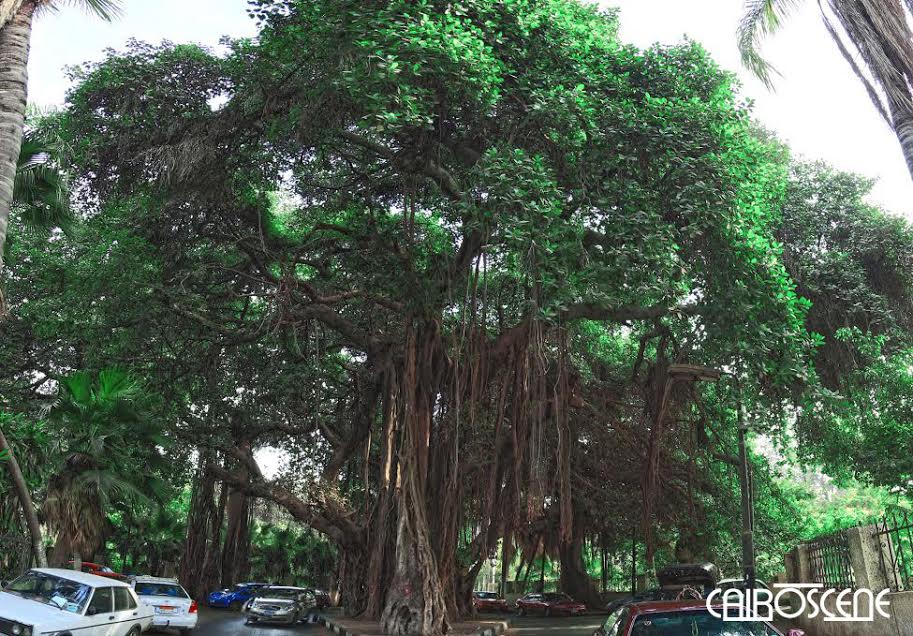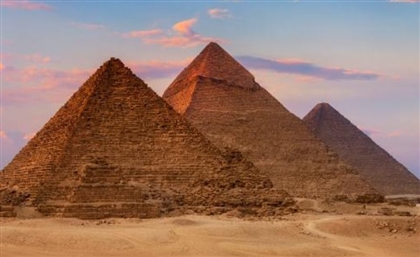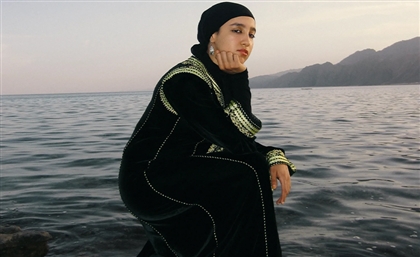Zamalek: A Tale of Two Gardens
Historian, author and world-renowned Egyptologist Ahmed Seddik takes us on a fragrant trip around the island of Zamalek, exploring the flora of Cairo's greenest neighbourhood and its botanical history.

May your spirit live and may you spend millions of years, you who love Thebes sitting with your faceto the north wind, your eyes beholding happiness. Words worthy of reciting in a royal garden delineated in harmonious hieroglyphs carved around the aromatic rim of the wishing cup of the boy King Tutankhamen well over 3000 years ago. To make his wish come true, the cup cuts the figure of an open lotus flower. From the dawn of Egyptian civilization, the lotus flower stood for rebirth and resurrection. President Nasser borrowed the plant for his plan upon raising the famous Cairo tower, emulating a lotus flower in the heart of Zamalek. In the wee small hours of the morning an Egyptian lily opened. Later in the day it closed. This observation led the Egyptian, who once upon a time was a keen observant of nature, to believe that the lotus was a hieroglyph for rebirth and renaissance. Nasser's emulation of a lotus flower in his tower was meant to capture this Egyptian philosophy. Nasser was the new pharaoh and he was being given credit for an Egyptian renaissance.
A man, a plan and a plant. That is the order of this article in this botanical tour of Zamalek. Zamalek was a garden dressed to the nines. Hence, I explore here nine trees that I encounter on daily walks through the island.
1. At the entrance of the Cairo tower, the National Tree of India salutes you, the tree celebrated by the Indian Nobel Laureate Rabindranath Tagore. It is one of the oldest banyan trees in Cairo, planted in 1868 - the same year poet Laureate Ahmed Shawqi was born. The Indian banyan with its poetic, propagating, dangling aerial roots is reminiscent of Ahmed Shawki's poetry. In this tour we seek to find trees that mirror the nature of the residents of Zamalek. Shakespeare was right: our life finds tongues in trees. I dare say that a man is known by the trees he keeps.
2. Zamalek is noted for splendid people and splendid trees; they go hand in hand. A socialite has many titles, so does delonix regia. She is the Royal Poinciana, and the Flame of the Forest as she puts on a dazzling display of blazing blossoms of flame, resembling an umbrella of fiery flowers, a dome of beautiful branches with fabulous feathery leaves. The Royal Poinciana is at home here in Zamalek exactly like the inhabitants of Zamalek who originally came from all walks of life and from different parts of the world.
3. A group of Zamalek dwellers have an elastic lifestyle -they could have lived anywhere, yet they prefer Zamalek. By analogy, the Indian rubber fig is equally elastic as it can grow in nearly all soils and is nicely named Ficus Elastica. It is historically treasured as a source of rubber of superior quality. This might explain its popularity.
4. The simmering heat of Cairo in July and August is at times like a burning fiery furnace. When it is so outrageous we appreciate the umbrageous queen of the Nile; the sycamore. For thousands of years the sycamore fig has graced the banks of the Nile. The heart-shaped leaves are reminiscent of the sycamore reputation as a tree for lovers. The sycamore fig is an all-embracing motherly tree.
5. When you turn your back to the palace of the Khedive and walk south, you go through a charming entourage of bougainvillea native to South America, with colourful flowers as showy as the Khedive himself - every tree you meet in the street is a special treat.
In the first half of the 19th century, over 20 years after Napoleon Bonaparte invaded Egypt, Champollion cracked the code of the Rosetta Stone. Thanks to the decipherment of the ancient Egyptian language, we read the heroic hieroglyphs of the Napoleon of ancient Egypt, Tuthmosis III. During his military campaigns, Tuthmosis III not only conquered lands but also plants which he had brought back to Egypt. His exploits formed the oldest botanical garden in history. While the garden had long since vanished, a perfect record set in stone survives today in the Festival Hall in the Temple of Karnak, it is a relief beyond belief. It is intriguing to see how Egyptian dynasts are keen on creating gardens.
6. Every day as I rinse my mouth with Listerine, an oral antiseptic named in honour of Sir Joseph Lister, the Father of Antiseptic Surgery, I am reminded of a Zamalek prominent tree, the eucalyptus. From eucalyptus we get the eucalyptol, the major active ingredient in Listerine. This gum tree has been instrumental in the conquest of malaria and drying of swamps. As eucalyptus spread from its native Australia to a host of habitats, it stands for those who would go the whole nine yards to help others.
7. In Ismail Mohamed street, the Bauhinia Variegata is a great source of delight. It goes by several names; camel's foot, mountain ebony, and Napoleon's hat, just to name a few. Bauhinia commemorates the Swiss botanists and brothers Jean and Gaspard Bauhin. The leaf has two lobes, one for each brother, while the variegation is a quality of the flowers. It is another glorious Indian gift known for its medicinal applications.
8. No garden is a garden without the date palm tree. It is the oldest cultivated tree in the world. If you believe in religion, science or both, this is your tree. It is mentioned in the Quran: “Shake the trunk of the palm tree towards thee: it will drop fresh, ripe dates upon thee. Eat, then, and drink, and let thine eye be gladdened!" The ancient Egyptians used the palm logs for roofing and the palm leaves for making baskets. A date palm branch stripped of leaves and notched was the hieroglyph for a year. Adding dates was the equivalent of sugar as evidenced by the hieroglyph for dates which indicated sweetness too. The cultivation of the date palm leads to the creation of a micro-climate good for other species. It is a symbol for peace and victory. In Zamalek, it would stand for those who 'will still bear fruit in old age, and stay fresh and green.'
9. The West Indian Jasmine, Plumeria alba or white Frangipani is the national flower of Nicaragua and Laos. It is named in honoir of the 17th century French explorer, Franciscan monk Father Charles Plumier who was appointed Royal Botanist by King Louis XIV of France to make voyages to the Caribbean. It is also known as Frangipani which literally means broken bread. The essential oil from the scented flowers is used in perfumes and aromatherapy. At night, the fragrance tends to be more intense with the intention of attracting the attention of a sphinx for pollination; not the Sphinx of Giza. The beautiful flowers have different meanings in different cultures such as devotion, dedication, creation, immortality and a new life. If you wish to break bread with your lover, Frangipani has the power to enhance the romance of your garden. The magic of trees sets in motion an ocean of emotions like a potion.
All photos within article courtesy of Ahmed Seddik. Main image by Mahmoud Asfour for CairoScene.
- Previous Article Three's a Charm at Cairo Jazz Club
- Next Article 10 Strictly Egyptian Moustaches That Will Inspire You This Movember























